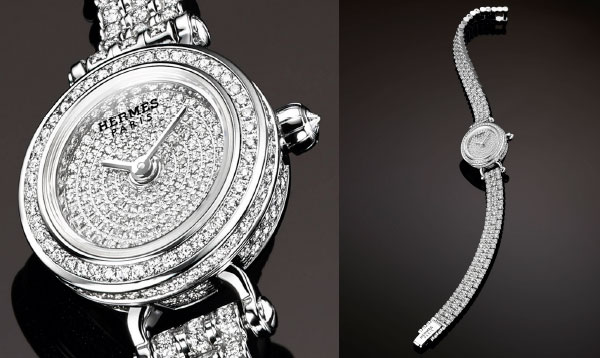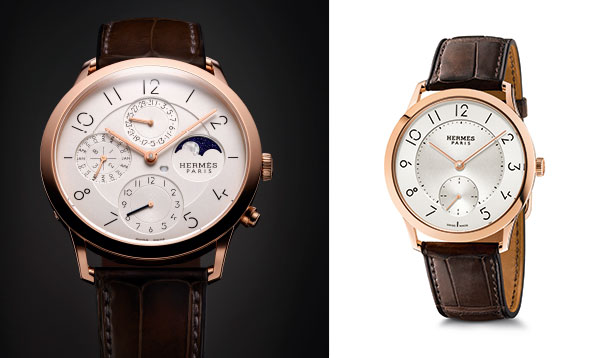
Dressage Quantième Simple
Movement : mechanical self-winding, Manufacture Vaucher Calibre H1837 Case : steel Dimensions : 40.5×38.4mm Functions : hours, minutes, seconds, date Caseback : sapphire crystal Water resistance : 50m Strap : matt Havana alligator leather
The watch : Dressage
The greatest icons generally know how to evolve with their time. Created in 2003 by Henri d’Origny, the Dressage watch has been modernised and lightened. While the steel or pink gold case maintains its classic dimensions, the diameter is broader and reveals even more strikingly the craftsmanship on the silver-toned or opaline black dial with vertical stripes and raised rhodiumed numerals. A watch already in a league of its own due to its bevelled tonneau shape, this model is distinguished by its perfect curve featuring lugs that are an extension of the bevels on the case. This collection with an aesthetic strongly reminiscent of certain 1930s chronographs comprises ten models : eight steel versions with either a large central seconds hand and a date display at 6 o’clock, or small seconds at 6 o’clock ; as well as two pink gold models with central small seconds, of which one is issued in a 175-piece limited edition.
Its architectural counterpart : the rectorate of the new University of Lisbon by Manuel and Francisco Aires Mateus
The Universidade Nova de Lisboa (UNL) is the most recent public institution for tertiary education and scientific research in Lisbon’s metropolitan area. Founded in 1973, in the context of the expansion and diversification of Portuguese tertiary education, the university consists of more than 14,000 students, 1,500 teachers and 800 employees and is located on three separate campuses, consisting of five faculties, three institutes and a school.
The new building is incorporated into the Campolide Campus of the Universidade Nova de Lisboa, close to the old Jesuit school and is on the edge of a square. The premises are divided into two distinct sectors – with the administrative offices on the one hand located in part of a tall, narrow building with wide views over the Monsanto Park ; and on the other hand, meeting rooms and theatres housed in the base of this three-storey construction, and spread over both the upper level of the public area and the lower level with access to the facilities.
The facades of the tall, narrow main building are covered in white stone while the wall facing the town is completely blocked off (the vertical connections of the building are against this wall). The other side, which faces the public square, has a number of windows – a series of seemingly haphazard, long, narrow cracks. The result is a facade that looks like a big perforated map.
Taking a closer look at the surfaces of these outer walls, one ends up imagining the lines and plans behind the thickness of the wall, a sort of watermark of the material that has been placed here. Just like Hermès’ “Dressage” watch, the material is regarded as a support upon which the essential elements of the object are engraved : the characteristics of the facades and their finishes, the particular positioning of the windows, the horizontal positioning of the foundations of the university building; the support of the hour hands or the numbers encrusted in the dial. A comparison between these two objects highlights subtle interventions, inspired by the pursuit of minimalism, or, more simply put, sober elegance.






